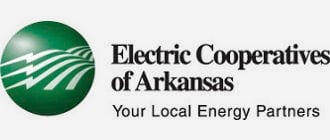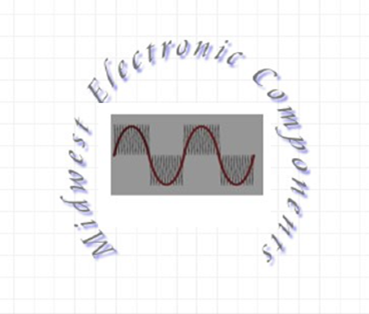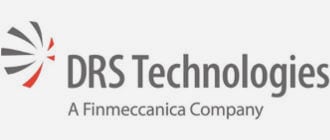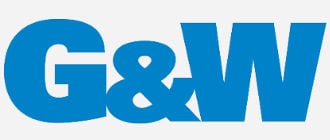GRAPES Research – Test Facilities
GRAPES has test facilities on both the University of Arkansas and University of South Carolina campuses. Each facility has a specialized focus, detailed below.
NCREPT | Learn More
The National Center for Reliable Electric Power Transmission (NCREPT) started its operation as a research center in 2005. Its 13.8 kV, 6 MVA test facility was opened on October 31, 2008. The test facility is suitable for testing distributed energy resources under IEEE 1547 and UL1741 standards.
- Energy Efficient: Test power is recirculated through the testing loop so the power drawn from the grid is limited to the system losses, enabling a cost-effective test facility.
- Highly Reconfigurable: NCREPT has two test loops, one at 480 V and one at either 4.16 kV or 13.8 kV. This allows for a wide range of power levels for testing.
- Variable Voltage: The test voltage can be varied from 0 to 528 V in the first test loop and from 0 to 15.18 kV in the second test loop due to the variable voltage capability imparted by NCREPT’s VVVF Drive.
- Variable Frequency: The VVVF Drive also enables varying the fundamental frequency of the tests. Typically these are varied between 40 Hz and 70 Hz, but values outside that range are possible, though they require derating.
- Dynamometer: 100 hp, 4,000 rpm dynamometer test stand allows testing and evaluation of motors and drives.
HiDEC | Learn More
Established in 1991, the High Density Electronics Center (HiDEC) is a research center with a worldwide reputation for expertise and excellence in the field of electronic integration. Both academic researchers and industrial clients benefit from:
- Dedicated Staff: Professional and dedicated staff (many with 20+ years of experience) provide safety and usage training on all equipment and processes.
- 24/7 Access: Certified HiDEC users have access to all facilities 24 hours a day, 7 days a week.
- Expertise: Users can solve problems and develop new ideas by leveraging the expertise accumulated by Center staff and Center-affiliated faculty.
- Unique Capabilities: Our low-temperature, co-fired ceramics laboratory is one of only a handful worldwide on a university campus.
VTB | Learn More
The Virtual Test Bed (VTB) is composed of a suite of software for rapid virtual prototyping of large-scale, multi-disciplined dynamic systems. The VTB software suite includes the following:
- Schematic Designer: The central user tool for composition and visual presentation of system models, allowing assembly of component models into system models.
- Entity Designer which aids developers in the creation of new simulation entities (such as new component models). A user interface allows the model developer to specify and characterize their new simulation entity.
- Module Designer: allows users to define and package new reusable models that are based on subsystems created with Schematic Designer.
The VTB simulation framework includes several solvers that use distinct algorithms to implement and execute the system model. It also includes an extensive library of simulation models, belonging to one of two categories:
- Entities are elementary devices whose behaviors are defined programmatically via a compiled engine or mathematically via an interpreted engine.
- Modules are subsystems made up of other components and a number of exposed parameters.
These modules are treated as individual components in Schematic Designer. VTB provides means for integrating models that were previously built in other simulation environments into a unified system model.
Finally, VTB provides methods to exploit the COM interface provided by some tools, such as Matlab, to integrate models into VTB via co-simulation.
UWM | Learn More
The Center for Sustainable Electric Energy Systems brings together the capabilities of existing Laboratories and Centers within UW-Milwaukee College of Engineering & Applied Sciences to enhance the collaborations within UWM and with other groups and organizations. Major research and education areas of the center include power electronics, microgrids, energy storage, protection, and cybersecurity.
Facility Features:
- Three labs with over 5000 sq-ft and over 500kVA power supply capabilities (three-phase 480 and 208).
- Full packages of MATLAB/Simulink, PSIM, PSS/E, and PSCAD
- Hardware in loop setups with National Instrument Compact RIO, Typhoon, and OPAL RT
- High power AC and DC sources, oscilloscopes with high voltage and high current probes, power electronics converters and devices.
- Two synchronous generators 63 kVA, 100hp dyno, and high power loads.
- Lithium-Ion capacitor modules (360VDC, 9F module and 750VDC, 5.1F module)
- 50kW solar PV and 12kW wind turbine
- 114kW Li-Ion storage and two 45kW natural gas generators
Leverage for Participating Industry:
- Leverages existing Navy, DOE, and DOD programs at UWM
- Establishment of a smart and connected energy and water systems, Air Force
- Extremely compact 500 kW, 2000 Hz inverter for high speed permanent magnet synchronous machines, DOE
- Electric ship initiative, architecture, protection, and energy management; US Navy
- Hybrid and compact integrated energy storage systems.
- UWM campus-wide Connected Systems Institute (CSI) with focus on Industrial Internet of Things

GRAPES at USC | Learn More
The power group at USC runs five laboratories on Power Electronics Converters and Systems, Digital Twins, Power Electronic System Controls, DC Microgrids, and High Voltage/Frequency Converters.
Facility Features:
- Five labs with over 6000 sq-ft and over 500kVA power supply capabilities (three-phase 480 and 208).
- High power AC and DC sources, measurement devices for high voltage, high current, and high frequency.
- Various power electronics converters and devices including converters based on IGBT, SiC MOSFET, and GaN Devices.
- Full software packages of MATLAB/Simulink, PSIM, PLECS, POWERWORLD, and PSCAD.
- Fast FPGA-based control setups.
- Hardware in loop setups with National Instrument Compact RIO, Typhoon.
Leverage for Participating Industry:
- Ongoing large research programs with ONR, DOE, and DOD at USC
- Medium voltage solar PV inverter
- Compact AC/DC converters for various applications.
- Digital Twin for Electric Ships; ONR
- High power isolated DC fast chargers.
- Carolina Microfabrication Center (CMC) as a one-stop shop with the facilities and expertise to execute nanoscale concept structures and prototypes. Capabilities span the entire range of nanoscale device development, from lithography, all the way through structural, optical and electrical characterization.
- USC Electric Ship Research and Development Consortium site is developing new multidisciplinary tools and methods for designing revolutionary naval and marine systems that manage impulsive power and energy demands by applying dc power technologies at tens of KVs and tens-to-hundreds of MWs.


















